How to Grow Hollyhocks in The Garden? Hollyhock Plant Care Guide
Hollyhock is a tall plant that looks very majestic in the garden. Because of its growth specifics, it's one of the most popular plants among gardeners. Growing it is not difficult even for those who lack experience, and the beautiful flowers are a reward for all the work and care given to it throughout the whole year. Check what you should know about hollyhocks and learn hot to care for the plant.
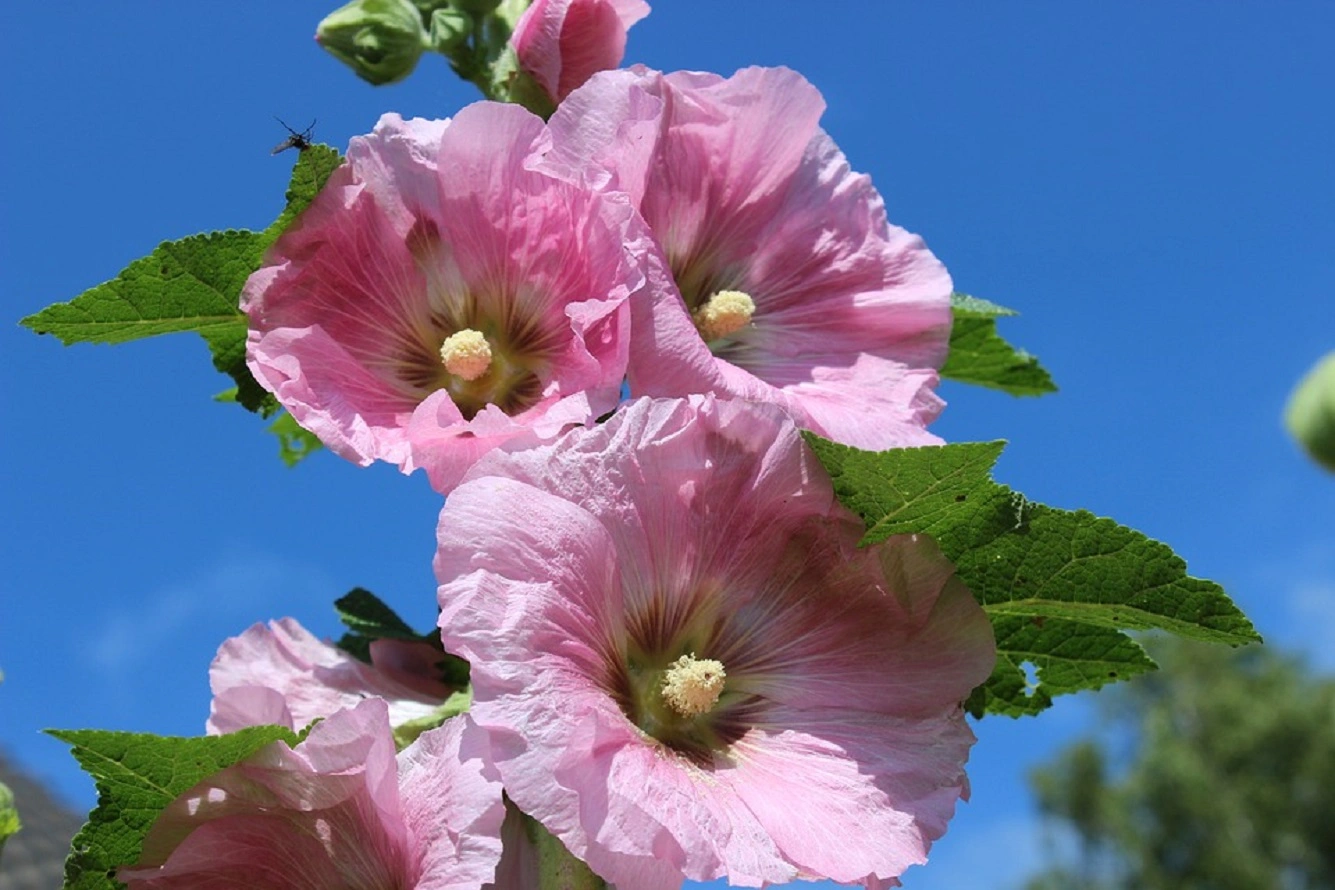
Hollyhock – plant’s origin and characteristics
Hollyhock, or more precisely Alcea L. is a plant from the Malvaceae family. There are over 80 varieties of these plants growing in various places in the world. In its natural habitat, hollyhock grows mostly in dry areas around the Mediterranean Sea.
Hollyhock develops its flowers for many weeks until they finally decorated the garden during the blooming season. It is considered an exceptionally ornamental plant. Currently, hollyhock flowers are becoming popular again, after a period when it has been replaced by other plant species.
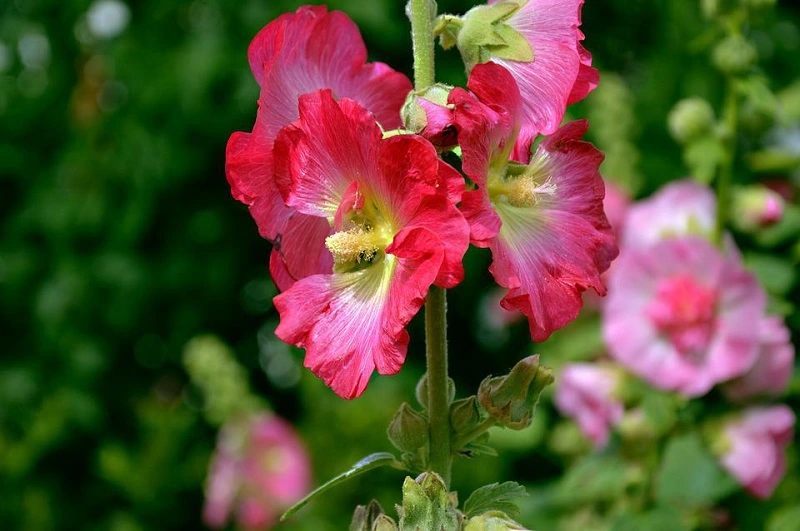
Hollyhock – what are its most popular varieties?
Among the many varieties of hollyhock plants, a few are the most popular among gardeners. This group includes plants such as:
- Common hollyhock – Alcea rosea is the most popular variety, grown mostly in rural areas. It has characteristic large, singular flowers that can be white, red, pink, and lavender. Because of the height it can reach, it’s good to support it with a cane to prevent breaking caused by stronger wind gusts or rain.
- Russian hollyhock – Alcea rugosa is a variety of low requirements, and it’s resistant to frost. It comes from southern regions of Russia and Ukraine, and can grow up to 2 meters (6.5 feet) tall. It blooms from June to September and develops large, round, light yellow flowers.
- Hollyhock mallow – referred to as musk mallow, it develops a strong and pleasant fragrance. This variety grows up to 60 cm (2 feet) tall, flowers appear from mid-summer and remain until fall. They are white or pink. It’s a perfect hollyhock variety for small gardens.
- Tall mallow – grows up to 1 m (3 ft) tall, it develops white flowers. A universal variety fitting flower arrangements of various landscape designs.
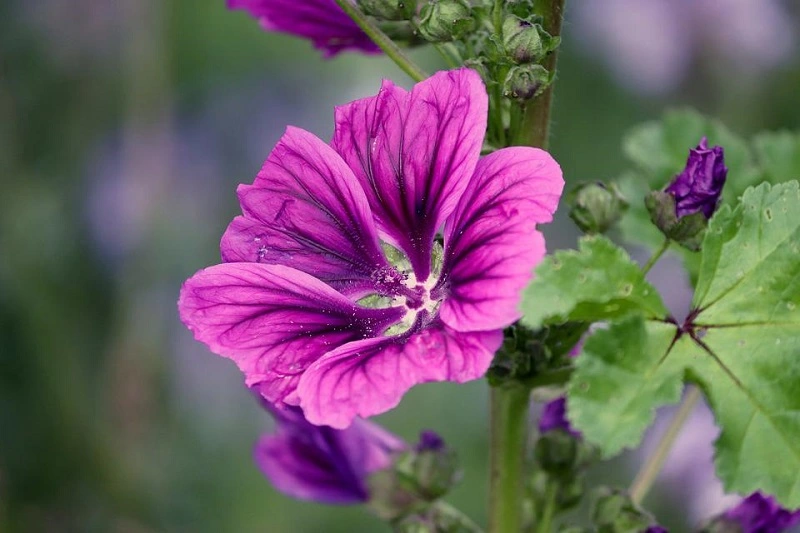
How to grow hollyhock in the garden?
Growing hollyhocks is not a difficult task – even for those who have never grown any flowers before. If you decide on this plant, make sure to prepare canes to protect it from accidental breaking. You can also use elastic garden twine.
If you’re wondering where to plant hollyhocks, make sure to pick locations that are shielded from strong wind gusts. Planting them next to a fence or the building’s wall is a perfect option. Thanks to this, they are protected from breaking even better.
The plant blooms practically the whole summer, but only if it grows in a good spot. When picking a place for hollyhocks, remember it needs not only protection from the wind, but also enough sunlight and rich, permeable soil. The plant prefers fresh and moist soil. But note that hollyhock doesn’t like waterlogged places.
Hollyhock – watering
Hollyhock requires frequent watering. If planted in full sun, it needs a lot of water. But make sure to avoid situations in which the water doesn’t have enough time to evaporate, and remains in the soil instead, as it’s harmful to the plant.
When watering hollyhocks, avoid wetting the flowers and the leaves, as it might increase their humidity. It’s an easy way to fungi diseases such as grey mold.
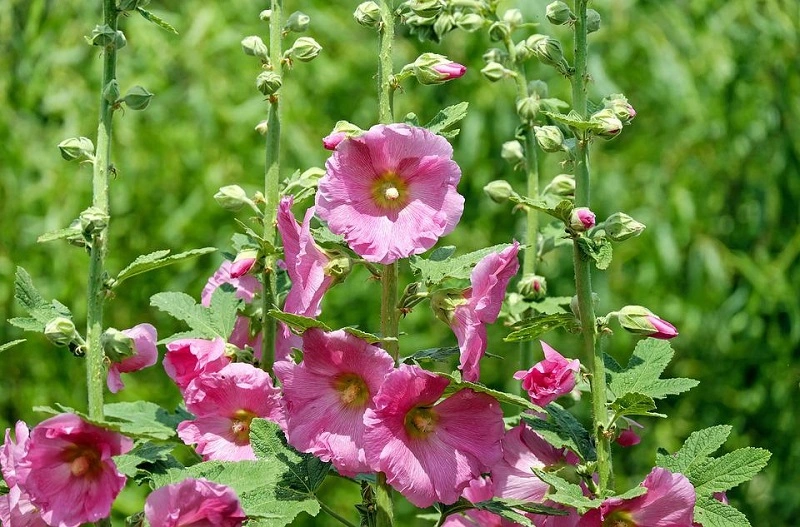
Do hollyhocks need fertilizing?
Hollyhock needs to be strengthened by regular fertilizing. If you provide the plant with enough nutrients, you can improve its health and enhance blooming. Follow these steps to take a proper care of the plant:
- feed the hollyhocks with compost from the beginning of June every 4 weeks until the end of the blooming season,
- the first dose of compost should be applied before the plant starts blooming, the second half of April is the best time.
How to propagate hollyhocks?
Hollyhocks left in the garden spread on their own. If you leave the flowers on the plant after the blooming season, it will develop mericarps with seeds. They fall to the ground in autumn, splitting and creating seedlings. If their number is too great or they are planted too close to each other, you can help them and remove the weakest seedlings.
You can also propagate hollyhocks yourself. To do this, you can use the seeds harvested from the plants. You can also use rooted cuttings.

Hollyhock – plant’s properties
Hollyhock is not just a beautiful plant. It’s also valued for its properties and used in herbal medicine and cosmetology. It’s rich in mucoid substances and also:
- resins,
- mineral compounds,
- sugars,
- flavonoids.
The substances of the plant carry antispasmodic, diuretic, anti-fever and anti-inflammatory properties. For this reason, hollyhock is an essential in a medicine cabinet.
Hollyhock – diseases and pests
The first year after planting hollyhock is the time when the plants should be protected from slugs and snails.
Aphids are a common problem when growing hollyhocks, but it can be quickly resolved with adequate products. You can purchase them in every garden store.
Mallow rust – puccinia mavacearum is the most common disease affecting hollyhocks. It’s a fungal disease, and as the name indicates, it affects mostly mallows, including hollyhocks. The fungus attacks plant’s tissues that die back in time. The disease can be recognized by characteristic bright spots that become darker later – they appear on the bottom of the leaves. The upper surface of the leaves gets covered with yellow lesions. The affected tissue withers and dies. Removing the infected leaves is a good way to fight the disease. It’s also good to spray the plant with antifungal products to strengthen the structure of the plant’s tissues.
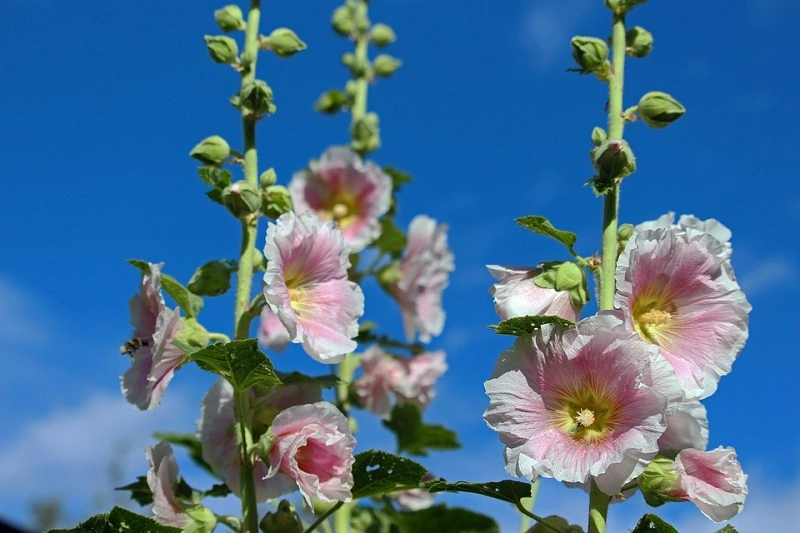
📍 What is hollyhock?
Hollyhock is a plant from the Malvaceae family. Not only it looks beautiful in the garden, but also carries many beneficial properties. There are several dozen varieties of this plant – they have different sizes and colors.
📍 What does hollyhock look like?
Hollyhocks look quite impressive. They have characteristic long stems that develop a lot of flowers. Depending on the variety, they have different colors.
📍 When to sow hollyhocks?
Hollyhocks should be planted between the end of May and the July. The seeds can be planted in containers and moved to their final destination after sprouting. It should be done in September.
📍 What is the best soil for hollyhocks?
If you decide to plant hollyhocks, make sure it has the right soil. The plant prefers rich and very permeable soil. It should always be moderately moist. Clay soils aren't good for hollyhocks, as they are too heavy.
Featured articles




